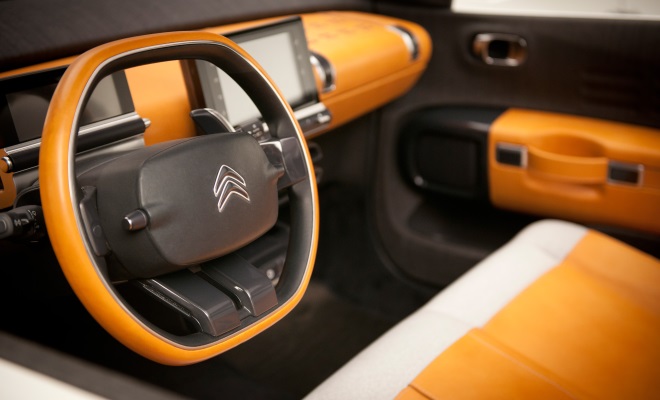by Lem Bingley 
Citroen’s Cactus is one of the stars of this year’s Frankfurt Motor Show – especially for those who feel a big Jaguar off-roader or yet another stupidly fast Ferrari are steps in the wrong direction.
Concept cars come in a spectrum of guises, from the purest flights of fancy right through to barely disguised production reality. Cactus falls towards the more practical end, with Citroen insiders saying it gives plenty of clues to the size, shape, stance and demeanour of a production model that will be revealed in February. That car is likely to be badged C4 Cactus and is set to make its public debut at the 2014 Geneva show early in March.

The new car will clearly be a crossover, though it’s unclear if it will oust the humdrum C4 –just as the Nissan Qashqai successfully wiped clean the Almera slate – or if the C4 range will expand to embrace the newcomer.
If I owned a C4 hatch I think I might be tempted to sell my car and trade up to C4 Cactus and, given the runaway success of the Qashqai, lots of people seem to share a similar view.

Despite the semi-offroad looks, we can expect Citroen to keep a tight rein on Cactus CO2 emissions. The excellent new C4 Picasso manages to slim all the way down to 98g/km despite a significantly larger body. Like the people carrier, the Cactus will be built on the second-generation Efficient Modular Platform (EMP2) that Citroen shares with sister brand Peugeot. EMP2 helped the new C4 Picasso shed 140kg compared with its predecessor, landing in the same ballpark as the much smaller C3 Picasso, and it’s likely the Cactus will be lighter still.
The show car Cactus included an Air Hybrid drivetrain, which could potentially power the C4 Cactus in the future, though it’s unlikely to arrive with the first models. When it was announced in January, Air Hybrid technology was not expected to be fit for production until 2016, though no doubt Citroen and its supplier Bosch are working feverishly to bring the date forward. Paired with a 1.2-litre, 3-cylinder petrol engine, the compressed air hybrid arrangement promises to cut urban fuel consumption by as much as 45%, and boost combined cycle economy by 35%.

The show car interior offers a delightful simplicity, with tablet-style electronics set against vegetable-tanned leather and cotton upholstery. Alas I can’t see much of the stripped-back style making it through to next year.
Outside, the Cactus concept includes arresting grey rubberised “Airbumps” on its flanks and at each corner, designed to absorb light knocks without injury. These are apparently destined for production too, though it seems likely that Airbumps on the corners might be somewhat more realistic than those on the doors. Time will tell.

The rest of the exterior sets a new template for Citroen, as the company aims to create a clearer distinction between its mainstream C-line and upmarket DS-line cars.
Thierry Metroz, DS-line design director, conceded that the new C4 Picasso shares a few too many DS design traits, but added that “the new C-line language is Cactus”. So it seems that future C-line cars will use simpler, rounded forms with very few sharp creases, and will rely on calm, horizontal lines rather than eager, wedge-like shapes. There’s a lot more C3 Picasso than C4 Picasso in the design of the Cactus.

A few metres away from the Cactus concept, Citroen’s DS Wild Rubis made its European debut, following its unveiling at the Shanghai Motor Show in the spring. As the newest DS design, it embodies the style we’ll see applied to future posh Citroens. Metroz said Wild Rubis is a very accurate preview of a mid-sized crossover that will go on sale in China next year. Whether the DS crossover will make it to Europe is yet to be decided, apparently.
With its sharp, sinuous creases and more aggressive lines, Wild Rubis is certainly distinct from the softer and more welcoming Cactus.
Far from prickly Cactus adds a soft touch to Citroen
19 September 2013
Read more about: Citroen Frankfurt 2013 hybrids



